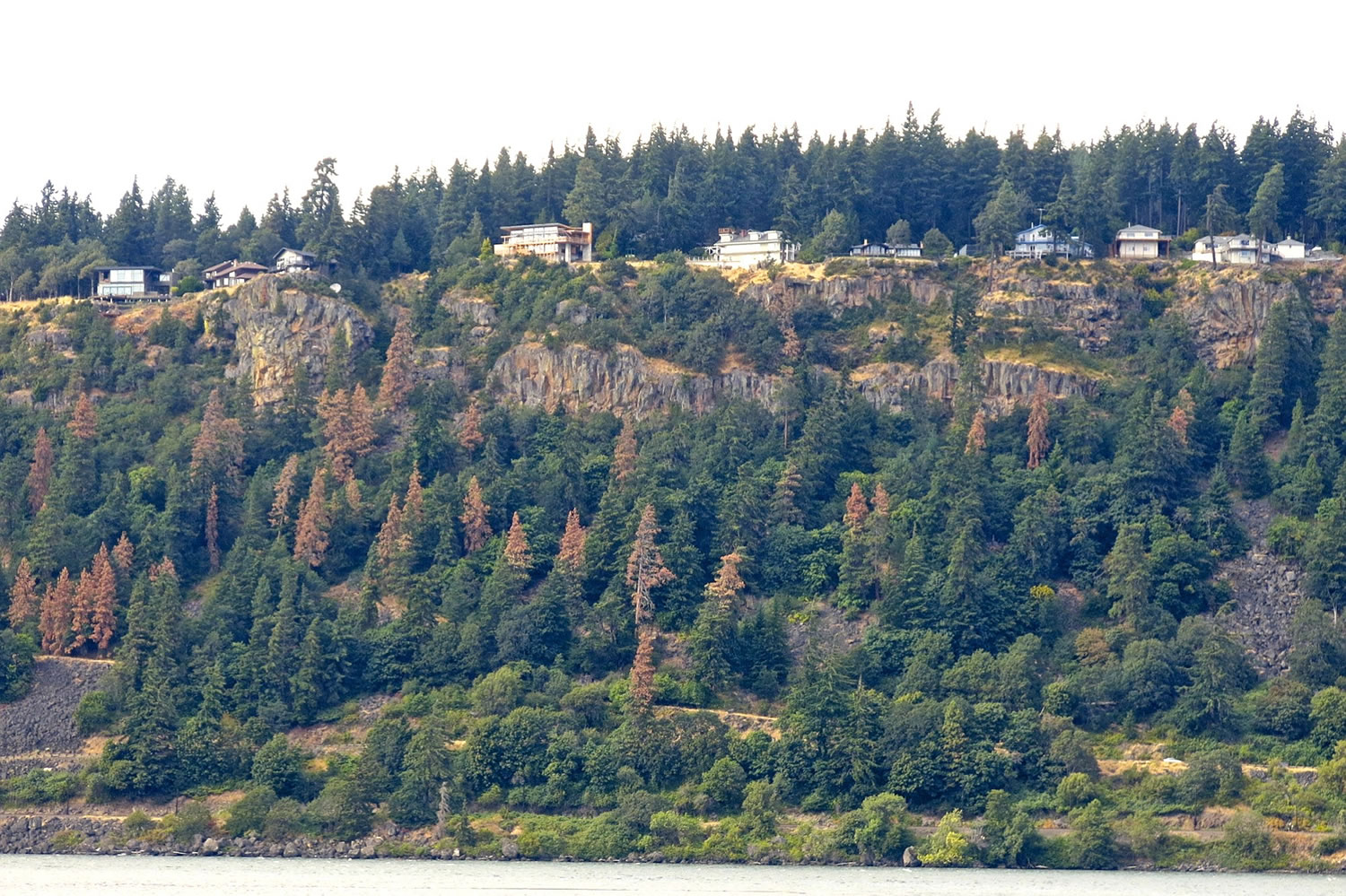With wildfires sweeping across Central Washington, researchers just south in the Columbia River Gorge are taking a close look at a tiny insect that tends to devour healthy pines after the flames die down.
Every year since 2010, they’ve watched one outbreak after another of the California fivespined ips, a little brown bark beetle that likes to feast on ailing pine trees. Scientists believe the insect is native to California and Oregon but that it’s recently begun to thrive in Washington.
The infestation appears to be fairly uniform throughout Skamania and Klickitat counties in Washington and Hood River and Wasco counties in Oregon, said Darren Nichols, the executive director of the Columbia River Gorge Commission.
“The beetles are decimating the standing pine trees throughout the four counties here at the eastern end of the Gorge,” Nichols said. “The dead trees stand out amongst the landscapes, where it creates an immediate visual impact until the trees are removed.”
This time of year, the beetles tunnel their way into the bark, where they consume the moist insides of the trees and lay their eggs there. As many as half of the adults move on to colonize other trees, and when the eggs hatch, the larvae emerge to eat the living tissue beneath the bark.
The beetles also carry blue stain fungus, which drains the trees of their nutrients, causing them to starve to death.
Normally, healthy pine trees can push the beetles out with their sap. After enduring the stress of a fire, however, the weakened trees lose their defense mechanism and become prey to the beetles.
Researchers have learned that when the beetle populations become massive enough, they can even take down clusters of healthy ponderosa pines, said Todd Murray, an entomologist with Washington State University’s Skamania County extension office.
So far, large populations of the beetle appear to be concentrated mostly east of Clark County on both the Washington and Oregon sides of the Gorge, especially near White Salmon and Hood River. A smaller population has taken root in Vancouver.
Murray and his team of researchers have even trapped the insects as far northeast as Goldendale and as far northwest as Joint Base Lewis-McChord.
Landowners in Underwood, a small town across the Columbia River from Hood River, Ore., began seeing something amiss among their trees several years ago, when the tops of seemingly healthy ponderosa pines started to dry out and turn orange.
“They started noticing large mature trees that were losing their tops and seeing the mortality of pine trees in groups of six to 10 trees,” Murray said. “By the time it’s red, it’s dead.”
In a way, the outbreak wasn’t particularly unusual, as other bark beetle species have had similar population booms in the state in recent years. But normally, the outbreaks only continue for a year or two before populations begin to shrink, Murray said.
“Probably the ips beetle is the most unpredictable because we don’t know how long this is going to continue,” he said.
Murray expects the beetles to continue thriving throughout the Gorge, especially near The Dalles and White Salmon, where wildfires have burned in recent years. The researchers also are keeping an eye on land to the north and east to see if the beetles continue to spread.
This summer, the researchers are working with several agencies to teach landowners what they can do to protect their trees from the insect.
“As far as trying to eradicate the beetles, it’s really difficult,” Murray said. “A single landowner trying to eradicate the beetles is kind of like taking a teaspoon (of water) out of the ocean.”
Forest management
The best scenario they can hope for is bringing the populations down to manageable levels. The most effective way to do that is through healthy forest management, including forest thinning, he said.
In some cases, the Gorge Commission also has consulted with landowners and entomologists to remove trees that pose safety hazards to their homes, said Angie Brewer, a planner with the commission.
Taking down the trees can actually be trickier than it might seem, Brewer said. You wouldn’t want to do that during the warmer months, when the beetles are active.
“If they’re not removed at the right time, you can actually make more habitat for the beetles,” she said.
Most bark beetle outbreaks subside when their food supply drops off, Murray said. Usually the bark beetle eats its way through all the weakened trees, and as its population dwindles from a lack of food, it can no longer overwhelm the healthy standing trees.
A harsh winter might kill them, but temperatures tend not to drop low enough in the Gorge, Murray said.
Many researchers attribute the beetle’s propagation in Washington to climate change.
Murray notes that at lower population levels, the beetles actually help forests by getting rid of dying trees and making room for new ones to grow.




